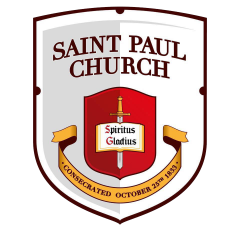Category: Home
Assumption of MaryAssumption of Mary

The Assumption of Mary (name in full Assumption of the Blessed Virgin Mary) is, according to the beliefs of the Catholic Church, Eastern Orthodox Churches, Oriental Orthodoxy, Church of the East, and some Lutheran and Anglo-Catholic Churches, among others, the bodily taking up of Mary, the mother of Jesus, into Heaven at the end of her earthly life. The analogous feast in the Eastern Churches is known as the Dormition of the Theotokos. In Lutheranism and Anglicanism, the feast is celebrated in honour of St. Mary, Mother of our Lord.
In the churches that observe it, the Assumption is a major feast day, commonly celebrated on 15 August. In many countries, the feast is also marked as a Holy Day of Obligation in the Catholic Church. The Assumption of the Virgin Mary in art has been a popular subject, especially since the 12th century.
The Catholic Church teaches as dogma that the Virgin Mary “having completed the course of her earthly life, was assumed body and soul into heavenly glory”. This doctrine was dogmatically defined by Pope Pius XII on 1 November 1950, in the apostolic constitution Munificentissimus Deus by exercising papal infallibility. While the Catholic Church and Eastern Orthodox Church believe in the Dormition of the Mother of God (Dormition of the Theotokos or “the Falling Asleep of the Mother of God”), whether Mary as the New Eve had a physical death has not been dogmatically defined. In Munificentissimus Deus (item 39) Pope Pius XII pointed to the Book of Genesis (3:15) as scriptural support for the dogma in terms of Mary’s victory over sin and death through her intimate association with “the new Adam” (Christ) as also reflected in 1 Corinthians 15:54: “then shall come to pass the saying that is written, Death is swallowed up in victory”.
The New Testament contains no explicit narrative about the death or dormition, nor of the Assumption of Mary, but several scriptural passages have been theologically interpreted to describe the ultimate fate in this and the afterworld of the Mother of Jesus. Various apocryphal documents do contain narrations of the event.
Saint LawrenceSaint Lawrence

St. Lawrence is thought to have been born on 26 December AD 225 in Valencia, or less probably, in Huesca, the town from which his parents came in the later region of Aragon that was then part of the Roman province of Hispania Tarraconensis. The martyrs St. Orentius (Modern Spanish: San Orencio) and St. Patientia (Modern Spanish: Santa Paciencia) are traditionally held to have been his parents.
He encountered the future Pope St. Sixtus II, who was of Greek origin and one of the most famous and highly esteemed teachers, in Caesaraugusta (today Zaragoza). Eventually, both left Spain for Rome. When Sixtus became the Pope in 257, he ordained St. Lawrence as a deacon, and though Lawrence was still young appointed him first among the seven deacons who served in the patriarchal church. He is therefore called “archdeacon of Rome”, a position of great trust that included the care of the treasury and riches of the Church and the distribution of alms to the indigent.
St. Cyprian, Bishop of Carthage, notes that Roman authorities had established a norm according to which all Christians who had been denounced must be executed and their goods confiscated by the Imperial treasury. At the beginning of August 258, the Emperor Valerian issued an edict that all bishops, priests, and deacons should immediately be put to death. Pope St. Sixtus II was captured on 6 August 258, at the cemetery of St. Callixtus while celebrating the liturgy and executed forthwith.
After the death of Sixtus, the prefect of Rome demanded that St. Lawrence turn over the riches of the Church. St. Ambrose is the earliest source for the narrative that St. Lawrence asked for three days to gather the wealth. He worked swiftly to distribute as much Church property to the indigent as possible, so as to prevent its being seized by the prefect. On the third day, at the head of a small delegation, he presented himself to the prefect, and when ordered to deliver the treasures of the Church he presented the indigent, the crippled, the blind, and the suffering, and declared that these were the true treasures of the Church. One account records him declaring to the prefect, “The Church is truly rich, far richer than your emperor.” This act of defiance led directly to his martyrdom and can be compared to the parallel Roman tale of the jewels of Cornelia.
On 10 August, St. Lawrence, the last of the seven deacons, and therefore, the ranking Church official, suffered a martyr’s death.
